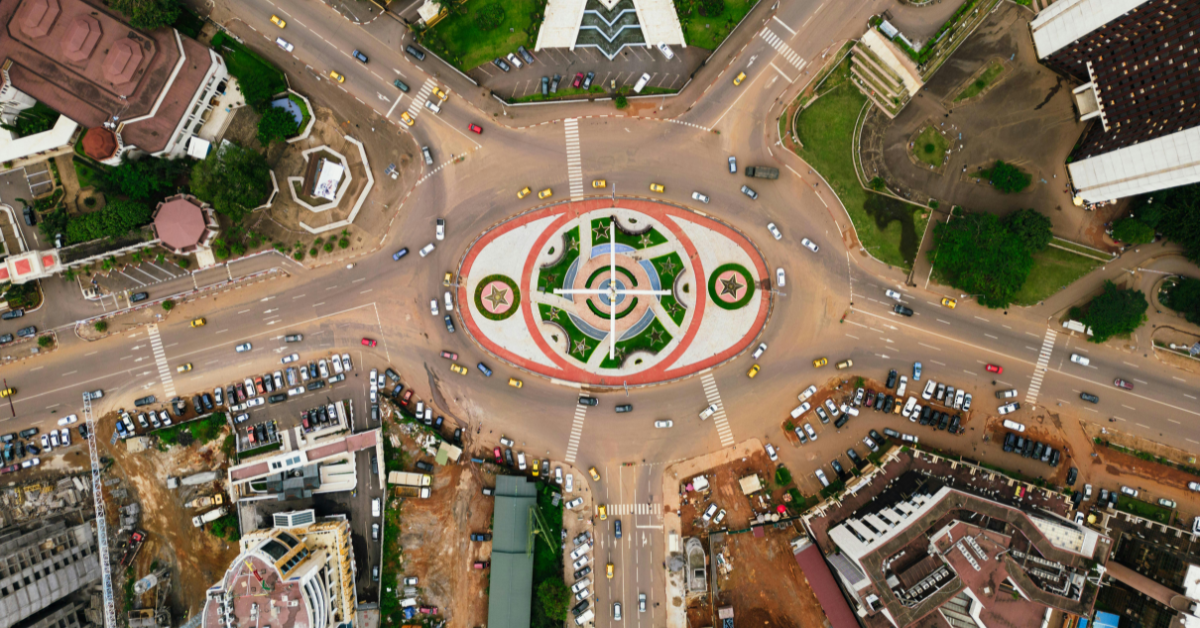Cameroon is located in Central Africa, and in Japanese it is commonly written as “カメルーン” (in Katakana). However, in some historical documents and academic works, Chinese-style phonetic kanji transcriptions were used. The most representative examples are “喀麦隆” and “喀麥隆.” These terms originate from the Chinese expression “喀麥隆 (Kāmài lóng)” and provide an interesting glimpse into the history of how foreign words were represented in Japanese. This article explains their background and cultural significance in a way that is easy for foreigners to understand.
General Usage of Cameroon in Modern Japanese
In modern Japan, the standard form of Cameroon is simply “カメルーン” written in Katakana. This is the typical method for adopting foreign place names into Japanese, directly converting the sound into Japanese phonetics. Other country names such as France, Nigeria, and Brazil follow the same Katakana convention, making them easy for readers to recognize.
However, in earlier times Japan also experimented with kanji phonetic transcriptions of foreign countries. For example, America was written as “亜米利加”, England as “英吉利”, and France as “仏蘭西.” These appeared widely in newspapers and dictionaries, and were familiar to educated people at the time. Cameroon’s forms “喀麦隆” and “喀麥隆” belong to this same tradition, brought into Japanese through Chinese sources.
Today, these kanji forms are virtually unknown to the general public. They survive only in academic or historical contexts, and ordinary Japanese people are unlikely to ever encounter them.
The Origins and Background of “喀麦隆” and “喀麥隆”
Both “喀麦隆” and “喀麥隆” derive from the Chinese transcription of Cameroon, “喀麥隆 (Kāmài lóng).” They are examples of phonetic borrowing, where kanji are chosen for their sounds rather than their meanings.
The difference lies in the characters “麦” and “麥.”
- “麦” is the simplified form used in mainland China.
- “麥” is the traditional form still used in Taiwan and Hong Kong.
Thus, while both forms mean the same thing, the variation comes from the simplified vs. traditional Chinese script distinction.
| Representation | Script | Source | Region Used | Status in Japanese |
|---|---|---|---|---|
| 喀麦隆 | Simplified | Chinese transcription | Mainland China | Appears in some documents |
| 喀麥隆 | Traditional | Chinese transcription | Taiwan, Hong Kong | Found in academic texts |
| カメルーン | Katakana | Phonetic | Japan | Standard modern form |
These forms are not actively used in modern Japanese but remain as historical traces of how language adapted foreign names.
Cultural Interest for Foreign Learners
For foreigners, discovering that Cameroon has multiple written forms in Japanese is an opportunity to better understand the historical relationship between Japanese and Chinese.
- Not used in everyday life
The forms “喀麦隆” and “喀麥隆” appear only in academic works or old newspapers. They are not part of daily Japanese usage. - Strong influence from Chinese
Because Japan shares the kanji writing system, it borrowed Chinese phonetic renderings of foreign names. Cameroon’s kanji forms are a clear example of this process. - Insight into kanji culture
These examples show how kanji have been applied not just for meaning, but also for sound. For learners, this highlights how language and culture intertwine across East Asia.
Comparison with Other Kanji Country Names
Cameroon’s “喀麦隆” and “喀麥隆” are not unique. Many other country names once had kanji representations based on phonetic transcription.
| Country (Modern) | Kanji Form | Origin |
|---|---|---|
| America | 亜米利加 | Phonetic rendering |
| England | 英吉利 | Phonetic rendering |
| France | 仏蘭西 | Phonetic rendering |
| Germany | 独逸 | Phonetic rendering |
| Portugal | 葡萄牙 | Phonetic rendering |
| Spain | 西班牙 | Phonetic rendering |
| Cameroon | 喀麦隆/喀麥隆 | Borrowed from Chinese |
All of these kanji forms are now obsolete, surviving only in historical or academic references.
Historical Background of Cameroon’s Representation
Understanding Cameroon’s kanji forms requires looking at how Japan handled foreign words in earlier eras. From the late 19th to early 20th centuries, Japan rapidly absorbed Western culture. At that time, both kanji phonetic transcriptions and Katakana spellings were used side by side.
Gradually, as education spread, Katakana became standardized for foreign words, while kanji transcriptions fell out of daily use. Yet, dictionaries and some academic works preserved them, leaving behind a record of how Japanese once approached foreign names.
| Era | Method of Representation | Characteristics |
|---|---|---|
| Meiji | Mostly kanji | Widely used in newspapers and dictionaries |
| Taisho–Early Showa | Kanji + Katakana | Academic vs. everyday usage coexisted |
| Postwar | Katakana only | Unified in education; kanji forms declined |
Comparison between Japanese and Chinese Practices
Comparing Japanese and Chinese reveals a sharp contrast in how foreign country names are written.
| Language | Main Method | Characteristics |
|---|---|---|
| Japanese | Katakana | Direct phonetic rendering, visually distinct |
| Chinese | Kanji transcription | Uses kanji for sound, often unrelated to meaning |
This shows how the two languages, though both rooted in the kanji tradition, chose different solutions for incorporating foreign names.
Conclusion
In modern Japan, Cameroon is universally written as “カメルーン” in Katakana. However, historically it also appeared as “喀麦隆” and “喀麥隆,” derived from Chinese phonetic renderings. The two forms exist because of the difference between simplified (“麦”) and traditional (“麥”) Chinese characters.
For foreigners, this provides a fascinating case study of how Japanese and Chinese interacted linguistically and culturally. Just as America was once “亜米利加” and France “仏蘭西,” Cameroon too was given kanji characters during a period of linguistic experimentation.
Today, only Katakana remains in use, but the old kanji forms are valuable cultural artifacts that reveal the history of language contact in East Asia.






